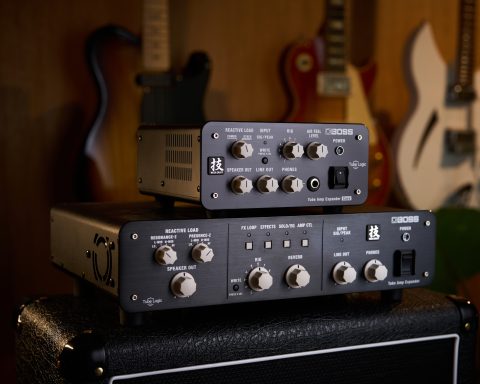Introduced at Summer NAMM 2007, the original Roland CUBE Street was an immediate hit. It offered buskers a portable, versatile, and easy-to-use solution. The amp helped get music to the frontiers of city streets and other spontaneous performance locations. In 2021, Roland passed the CUBE Street torch to BOSS. The CUBE Street II continues the line’s innovations. Still, the history of busking goes back much further.
Busking’s Beginnings
Singer-songwriters today can set up with a BOSS CUBE Street II and go to work. Troubadours in the Middle Ages had it tough. Traveling through treacherous lands, their performances filled their bellies and earned lodging. On the other hand, a less-than-entertaining show could bring a barrage of rotten fruit from disgruntled villagers.
Still, these folks didn’t have to contend with street noise, mass transit, or disinterested hordes. Those types of challenges are everyday life for modern-era buskers. Regardless, the biggest challenge is being ignored. In the world of busking, performing unheard is like being invisible.
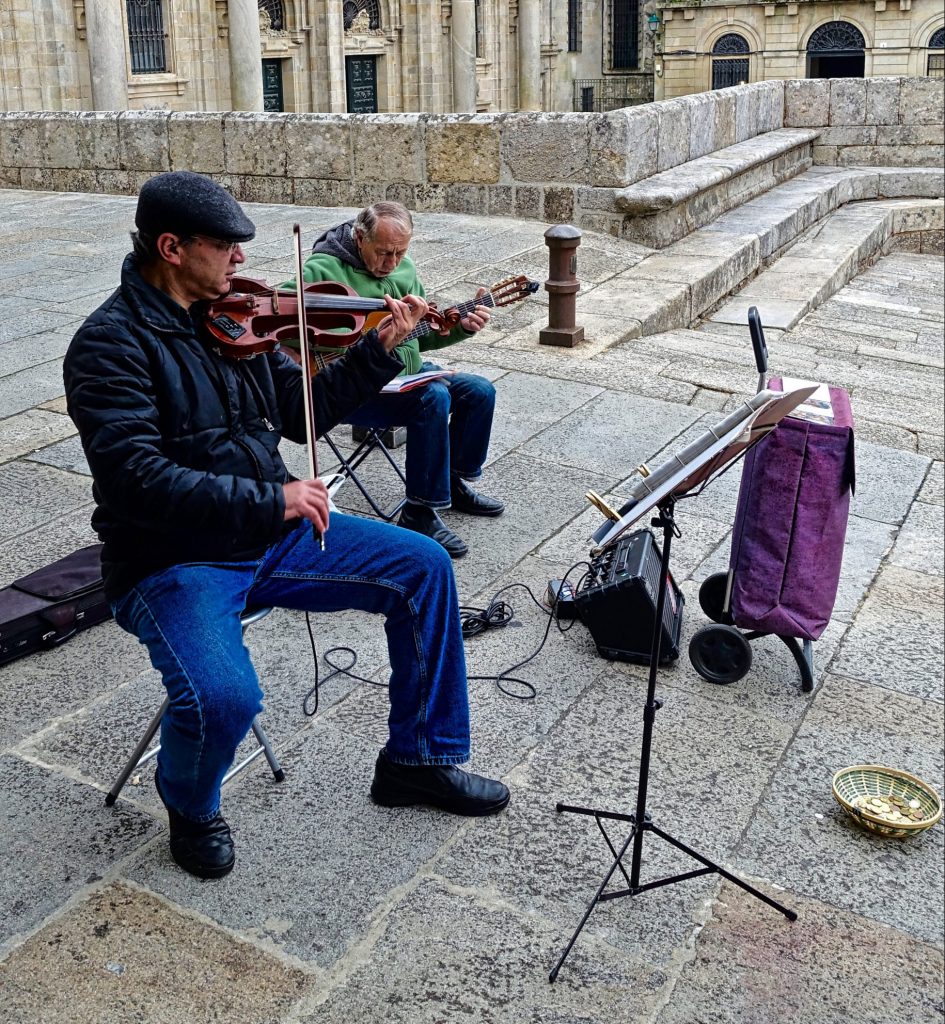
"Early busking cultures were musically rich, inspirational, and influential."

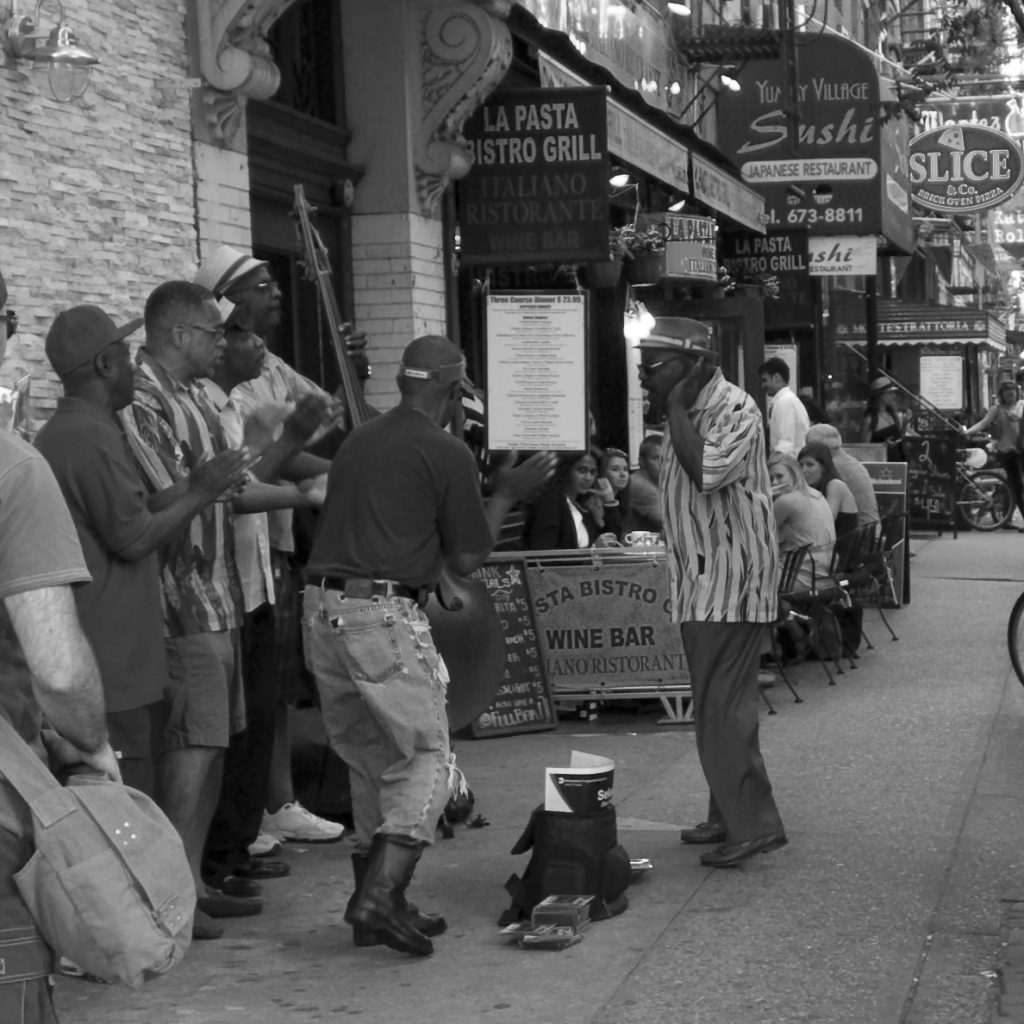
An International Tale
Now, let’s put the history of busking into context by moving from the troubadours of medieval times to more contemporary settings. The busking scene in the 19th century was a worldwide phenomenon. Across Europe, it ranged from the Trouvères of northern France to Minnesingers in Germany. This is not to mention the Viffianesi of Italy, Mexico’s Mariachis, and the Chindonya of Japan.
The Impact of Doo-Wop
The tradition of street performance went through countless changes over the ensuing years, eventually leading to the doo-wop groups of the 1950s. A cappella singers in New York, Chicago, and Baltimore plied their talents on street corners, in schoolyards, even under bridges.
It’s a sound that made lasting contributions to the music of the 20th century. In time, the soaring, gospel-influenced vocal harmonies of doo-wop music had a profound effect on R&B music of the era. Eventually, they inspired tracks by the Temptations, Shirelles, the Four Seasons, and other groups.
"Troubadours in the Middle Ages had it tough. Street performers today can set up a CUBE Street and go to work. "
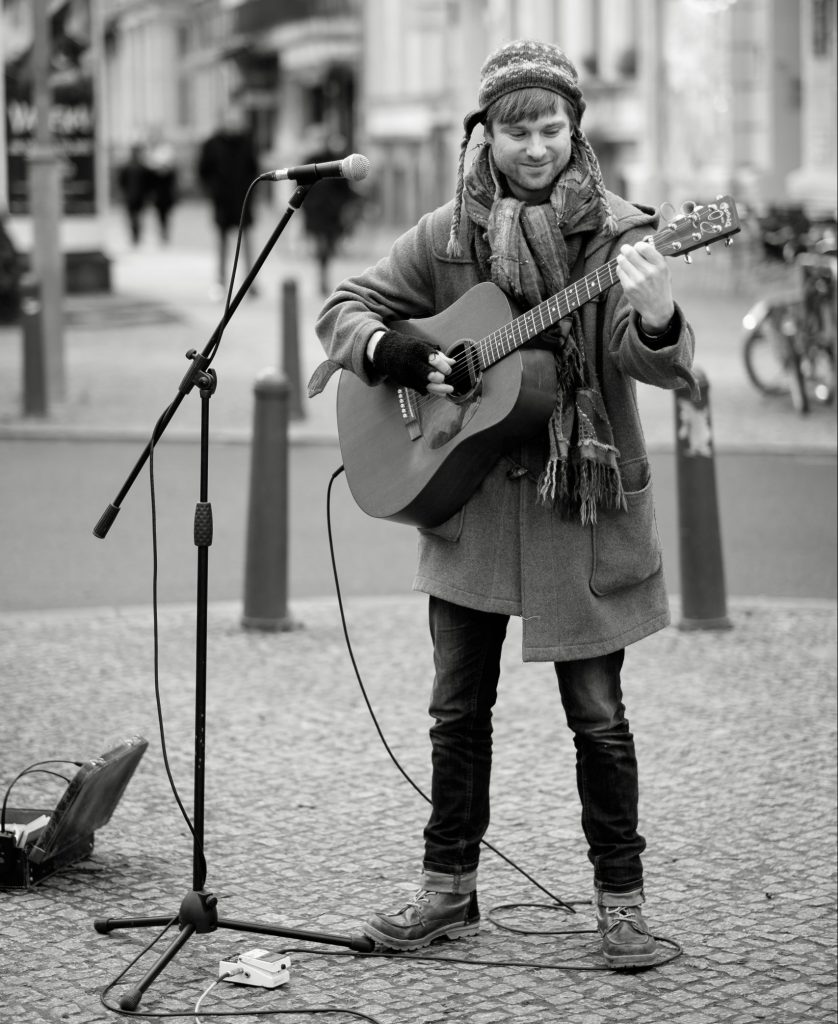
The Times They Were a Changing
The folk music boom of the 1960s, the ascension of singer-songwriters in the ’70s, and the explosion of MTV Unplugged in the ’90s triggered tidal waves. Musicians with acoustic guitars slung across their backs set up in parks, cafes, and parties to weave their musical tales.
Early busking cultures were musically rich, inspirational, and influential. They were also typically acoustic. This posed a challenge for many 21st-century street performers. As music production became more detailed, the expectations of modern audiences progressed accordingly. There was also the proliferation of iPods, smartphones, tablets, and other digital music devices. This drove the popularity of high-quality earbuds and headphones.
"Right out the gate, the CUBE Street garnered raves from industry media, busker groups, and social influencers."
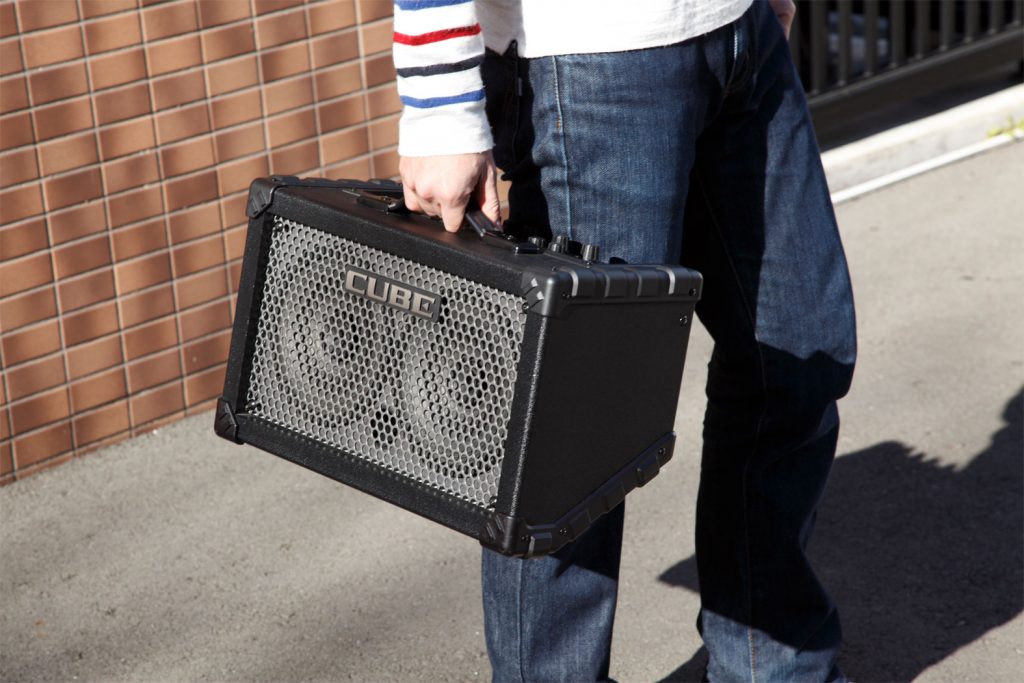
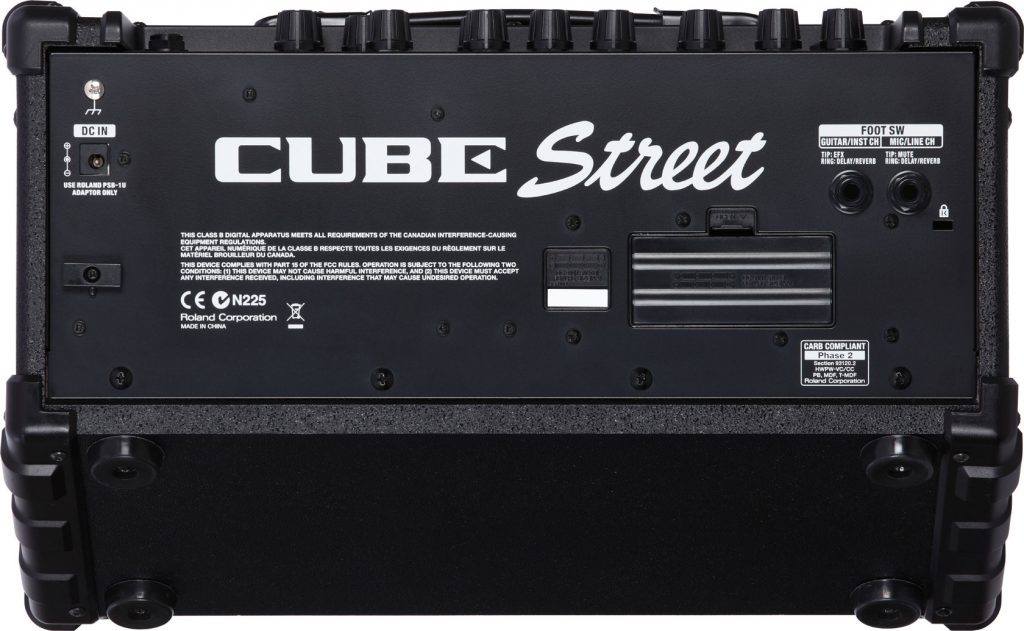
Street Star From the Start
Right out the gate, the CUBE Street garnered raves from industry media. Guitar Player, Guitar World, Music Radar, Frets—plus busker groups and social influencers—embraced the CUBE Street. It scored top marks in many “Best Amps for Busking” lists. As a result, the trend-setting, mobile sound system showed up around the world almost immediately upon its release.
Features for Days
The debut version of the CUBE Street offered eight COSM models (including an acoustic simulator). It boasted six digital effects (reverb, delay, chorus, flanger, phaser, tremolo), as well as dedicated reverb and delay on the Mic/Line channel. There was 2-band EQ (Mic/Line channel), and 3-band EQ (Guitar/Instrument channel). Plus, it had an onboard chromatic tuner, two 6.5″ speakers, aux input, headphone output, 5 watts of power, and 15 hours of continuous use from six AA batteries.
10 Years On
Ten years down the road, Roland upgraded the CUBE Street concept with the CUBE Street EX. The new version ensured that buskers would have sonic success in any environment. The wattage increased tenfold to 50 watts. Plus, there was an option to save battery power by running at 25 or 10 watts. Roland also updated the speakers to two 8″ low-frequency drivers and two 2″ high-frequency drivers.
In addition, the EX offered 3-band EQ and reverb on both channels (Mic/Instrument and Mic/Guitar). This reduced the digital effects to chorus and delay. The approach was a savvy move. Many buskers were incorporating pedalboards into their rigs. Two-way communication with iOS devices via i-CUBE LINK was another welcome addition.

"Taking into account how busking has changed, the CUBE Street II features an onboard looper."

The CUBE Street Evolves
All this leads us to the present day. Taking into account how busking has changed, the BOSS CUBE Street II features an onboard looper. It allows up to 45 seconds of stereo recording time. The new model also includes an automatic harmony feature (with unison, high, and higher modes). There’s also USB, a CUBE JAM iOS app, and an optional Bluetooth MIDI Dual Adaptor for streaming audio.
The CUBE Street II also enhances the crucial portability factor by reducing the unit’s weight to 9 lbs. The BOSS CUBE Street II is an upgrade for next-gen buskers. Oh, and you can still get it in black and red.
"These days, a compelling busker can engage a crowd with a voice and an acoustic instrument."

"The multi-featured CUBE Street has always been the perfect partner for forward-thinking buskers of all styles."

Making Street Art
These days, a compelling busker can engage a crowd with a voice and an acoustic instrument. Still, there are factors at play that can make the approach difficult for some musicians. A 21st Century Musicians Guide to Street Busking by Onyx Ashanti explains how technology changed busking.
“Music busking was, for most of the 20th century, an acoustic art form,” writes Ashanti. “Soloists or groups of musicians would play together to create music. But the electrification of the guitar signaled the dawn of a new age. All of a sudden, musicians were taking to the streets with small amplifiers.”
Not surprisingly, scores of those “small amplifiers” were CUBE Streets. The multi-featured amps are perfect partners for forward-thinking buskers. Let’s look at some more of the challenges confronting modern street musicians and how the CUBE Street line addresses them.
"Creators can now offer a multi-layered show by adding backing tracks to their performances."
A Little Help from Your Friends
When you’re competing with the sounds of great albums and songs, attention may need more sonic firepower. The COSM amp models and effects of the CUBE Street provide opportunities to astound audiences with pro sounds.
Opera singers, gospel choir members, a cappella groups, and blues shouters have a bit of an advantage in noisy environments. Big voices tend to cut right through distractions. But if your sound is more Billie Eilish mellow than Big Mama Thornton throaty, the CUBE Street—with its mic and instrument inputs, EQ, and effects—can help get your act out there.
Creators may wish to offer a multi-layered show by adding backing tracks to their performances. They can use the aux input of the CUBE Street to blend impact and atmosphere with live playing.

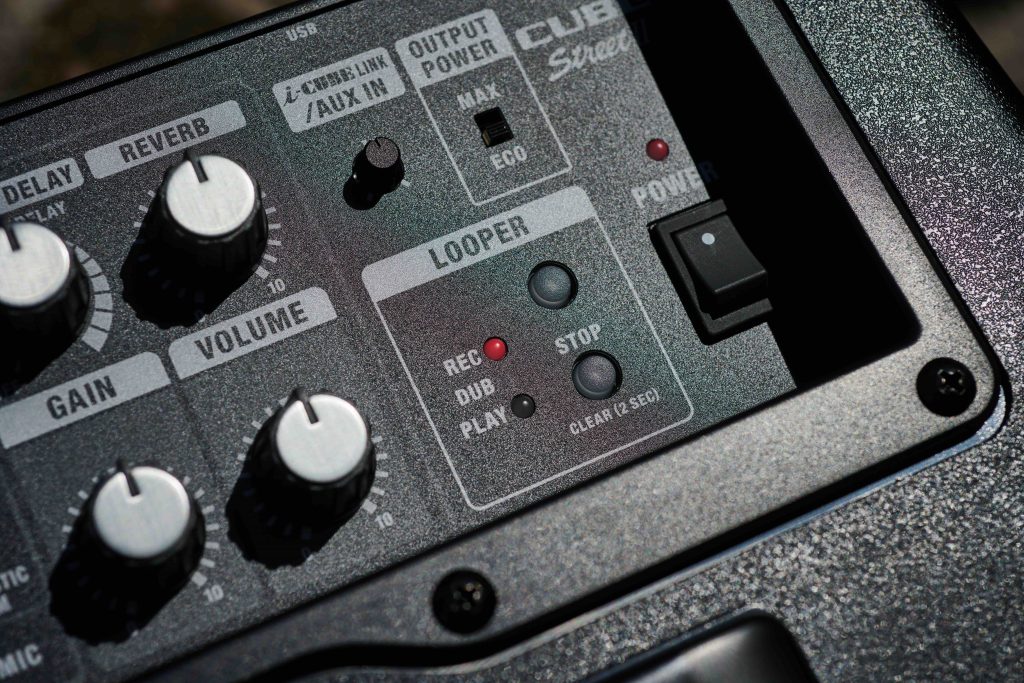

"The CUBE Street is effortless to move around. You can pack up and travel to a more populated spot on a dime."

On the Move
This one is obvious. The CUBE Street was designed for mobile performers. Still, it’s worth emphasizing the advantages of its versatility and small footprint. For buskers who need to travel by bus, car, or Uber to their favorite “pitch” (performance spot), a CUBE Street is easy to wrangle. Perhaps more importantly, it’s compact enough to be able to keep a watchful eye on your gear while taking public transportation.
Walking to an actual performance “venue” can also be a one-person operation. Indeed, you can tote a CUBE Street with one hand, your guitar’s gig bag can be slung over your shoulder, and a mic stand in your other hand. (Mics, cables, small audio-playback devices, and even a tip box can fit in a gig bag’s pockets.)
In addition, the whole shebang is near effortless to move around. It all supports a quick setup, so you can pack up and travel to a more populated spot on a dime.
Standing Out
Every little bit helps grab eyeballs and ears out there in the hinterlands of outdoor settings, so even the two available colors of the CUBE Street can be advantageous. Yeah, it’s a little thing, but it can be an important little thing.
Maybe you like to blend a bit into the surrounding streets and buildings—as if your music was magically surrounding the audience. If so, the unassuming black hue (and low profile) of the CUBE Street is a great choice. Want to stand out and have people look your way before they even hear what’s going on? Choose the eye-catching red CUBE Street.

"Contemporary stars with busking backgrounds include Tracy Chapman, KT Tunstall, and Rodrigo y Gabriela."

Stars on the Pavement
Buskers wish to spread joy, share their art, and support that artistry by impressing audiences enough to collect a few tips. There have even been notable buskers going back to Ben Franklin, who performed songs and poetry. A shortlist of contemporary stars with busking backgrounds includes Marc Bolan (of T.Rex), George Michael, Tracy Chapman, Rod Stewart, KT Tunstall, Nik Turner (Hawkwind), Tash Sultana, the Violent Femmes, and guitar instrumentalists Rodrigo y Gabriela.

"The CUBE Street provides the means to accomplish what the troubadours sought—a chance to be heard."
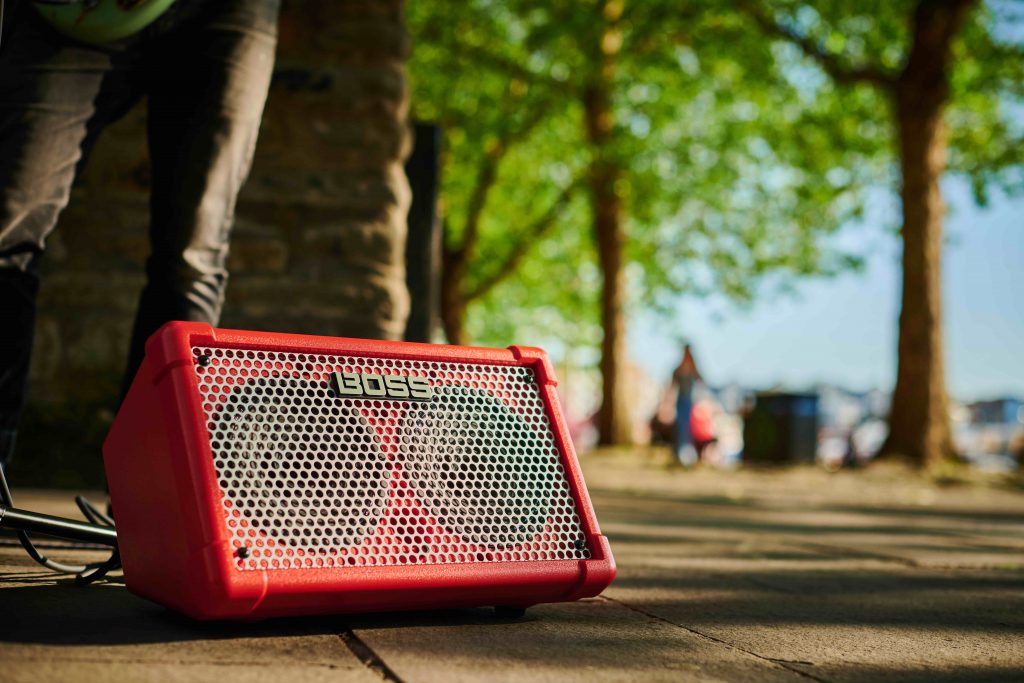
A Busker’s Paradise
CUBE Street models didn’t become the top-selling portable amps by accident or luck. Roland researched to determine what buskers needed to up their game. Then they tossed in a few surprising features in the process.
BOSS is watching the scene and looking to the future, continuing to offer buskers features to deliver transcendent performances. Ultimately, the CUBE Street II provides the means to accomplish what the troubadours sought—a chance to be heard.





